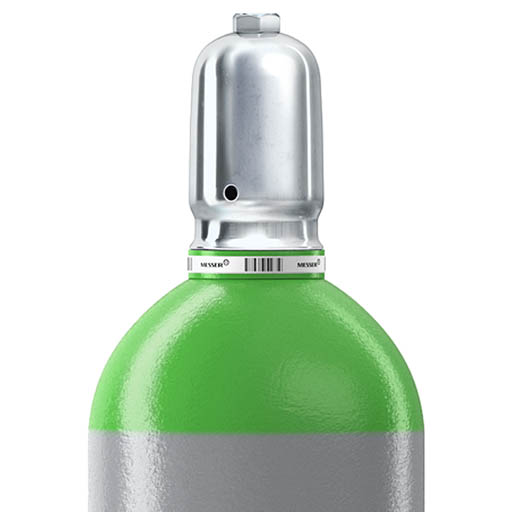Flame cutting
With flame cutting, the component to be cut is heated to ignition temperature at the surface by the heating flame. Once the material has reached ignition temperature, it is burned with an oxygen jet. Hence the name “flame cutting”. As this continuous process is exothermic, no additional energy is required to heat up the entire thickness of the sheet. The heating flame supplies all the heat for heating up the surface. The heating flame is arranged in the form of a ring around the cutting channel in order to allow the cutting direction to be changed without turning the cutting nozzle. Flame cutting requires the ignition temperature of the material to be lower than its melting temperature. This is not the case with higher-alloy steels or non-ferrous metals, hence these are cut with the plasma or laser process.
Plasma cutting
Plasma cutting is particularly suitable for high-alloy steels and non-ferrous metals with greater thicknesses. The arc is bundled by the high pressure of the cutting gas. The extremely high temperature of the arc causes the material to be melted or heated to ignition temperature. The material can now be burned or pushed out of the groove by the cutting gas. With smaller thicknesses, plasma cutting is inferior to laser cutting in terms of cutting quality, but it is more economical when cutting thicker sheet metal. Particularly high cutting quality is achieved with fine-beam plasma cutting.
Laser cutting
With laser cutting, the laser beam is the heat source. Here, too, the material is burned or blown out of the groove by the cutting gas jet when it has reached ignition temperature or been melted.
Flame gouging
Flame gouging follows the principle of flame cutting. In contrast to that process, a curved flame cutting nozzle is used. The burnt material (slag) is removed from the groove by the oxygen jet and the waste gases from the heating flame. This process is particularly suited to removing defective welds.
Flame cleaning
Flame cleaning is used for surface cleaning and the pre-treatment of concrete and steel. A block burner consists of closely spaced nozzles, producing a row of small heating flames. This burner is now passed directly over the surface to be cleaned. When cleaning concrete (DVS Guideline 0302), momentary heating of the surface results in a thin layer flaking off. Any paint, moss or other impurities that may be present are also removed in the process. The result is a clean surface that is suitable for the application of paint, plaster or other coatings.
When cleaning steel, both ferrous and non-ferrous components on the surface are burned, reduced or detached and removed mechanically by the pressure of the flame. The application is widely used, for example, in shipbuilding and bridge construction. However, this kind of work should only be carried out by suitably qualified / trained staff.
Flame-jet drilling
Flame-jet drilling involves the use of an oxygen lance. This consists of a tube that is filled with steel wires. One end of this lance is heated to ignition temperature while the other end is purged with oxygen. As a result, the lance starts to burn by itself. This tool can now be used to drill in concrete or steel. This process is also recommended for starting the cut when flame cutting thicker sheet metal.

